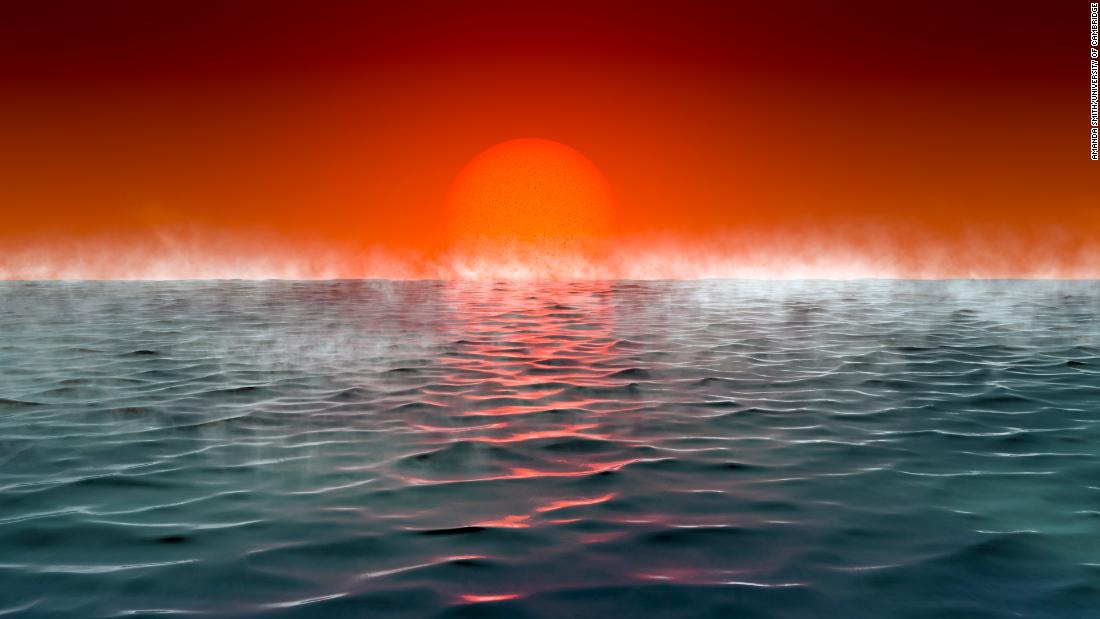
Sign up for CNN's Wonder Theory science newsletter. Explore the universe with news on fascinating discoveries, scientific advancements and more.
(CNN)In the quest to find potentially habitable planets outside of our solar system, astronomers have searched for exoplanets similar to Earth.
Now, scientists have a new class of habitable exoplanets to look for: Hycean planets.
These are hot planets covered in oceans that have an atmosphere rich in hydrogen -- and they are much easier to find and observe than twins of our own planet. And learning more about Hycean planets could help scientists find biosignatures, or signs of life, outside of our solar system in the near future.
The study published Wednesday in The Astrophysical Journal.
"Hycean planets open a whole new avenue in our search for life elsewhere," said lead study author Nikku Madhusudhan, a reader in astrophysics and exoplanetary science at Cambridge University's Institute of Astronomy, in a statement.
There are more than 4,000 known exoplanets outside of our solar system. Planets are considered to be potentially habitable when they are located within the habitable zone around the stars they orbit. This zone is a sweet spot, which means the planet is at the right distance from the star for liquid water to have a stable presence on the planet -- and possibly support life as we know it.
Ocean worlds
Some of the Hycean planets are bigger and hotter than our planet. But researchers believe these planets have large oceans that could support the kind of life that began on early Earth and can still be found in extreme ocean environments.
One of the most appealing features of these planets is the fact that they have a larger habitable zone than Earth or Earth-like planets -- so they could still support life even though they exist outside of the zone where our planet is required to be in order to sustain habitability.
Of the thousands of exoplanets discovered within the last 30 years, many of them are between the size of Earth and Neptune. Scientists use names like "super-Earths" and "mini-Neptunes" to describe these planets, which can be rocky like Earth or ice giants like Neptune. Or they exist somewhere between.
Mini-Neptunes are more than 1.5 times the size of our planet, so they are still smaller than Neptune, but too large to have a rocky interior like Earth. And beneath their atmospheres, which are rich in hydrogen, the pressure and temperature is likely too great for life to endure.
Recent research by Madhusudhan and his colleagues, however, determined that this inhospitable nature isn't always the case. Depending on the conditions -- including size, mass and temperature - some of these planets could be habitable.
Promising planets in the search for life
Their study has led to the new classification of Hycean planets. These planets can reach up to 2.6 times the size of Earth and reach atmospheric temperatures of almost 392 degrees Fahrenheit (200 degrees Celsius). Underneath their hydrogen-rich atmosphere are oceans that span the planet -- and microbial life could exist in these oceans.
Some of these planets may be tidally locked, meaning they permanently have a side that receives daylight from the star it orbits and the other side is perpetually in the dark. In this case, tidally locked Hycean planets may only be habitable on one side.
Hycean planets are common among the range of known exoplanets, but they haven't been studied as much as super-Earths. Perhaps the answer to where life exists outside of our solar system has been within this known range the entire time.
Understanding if a planet within the habitable zone has the right ingredients for life, means searching for biosignatures like oxygen, methane, nitrous oxide and ozone, or biomarkers including methyl chloride and dimethyl sulfide -- all of which are found on Earth.
"Essentially, when we've been looking for these various molecular signatures, we have been focusing on planets similar to Earth, which is a reasonable place to start," Madhusudhan said. "But we think Hycean planets offer a better chance of finding several trace biosignatures."
Future telescopes, like the James Webb Space Telescope launching in October, will be able to peer within the atmospheres of exoplanets and help scientists learn more about their composition. Hycean planets may present a promising target for observation. One such candidate, called K2-18b, could reveal biosignature molecules.
"It's exciting that habitable conditions could exist on planets so different from Earth," said study coauthor Anjali Piette, a doctoral student at Cambridge's Institute of Astronomy, in a statement.
There are promising planets of interest, both within our solar system as well as outside of it. However, biosignatures have yet to be detected on a world outside of Earth.
"A biosignature detection would transform our understanding of life in the universe," Madhusudhan said. "We need to be open about where we expect to find life and what form that life could take, as nature continues to surprise us in often unimaginable ways."
Science - Latest - Google News
August 26, 2021 at 05:16PM
https://ift.tt/3ykNCir
This new class of hot ocean worlds could support life - CNN
Science - Latest - Google News
https://ift.tt/2Kb7H4e
https://ift.tt/3ceUkwc
Bagikan Berita Ini

















0 Response to "This new class of hot ocean worlds could support life - CNN"
Post a Comment